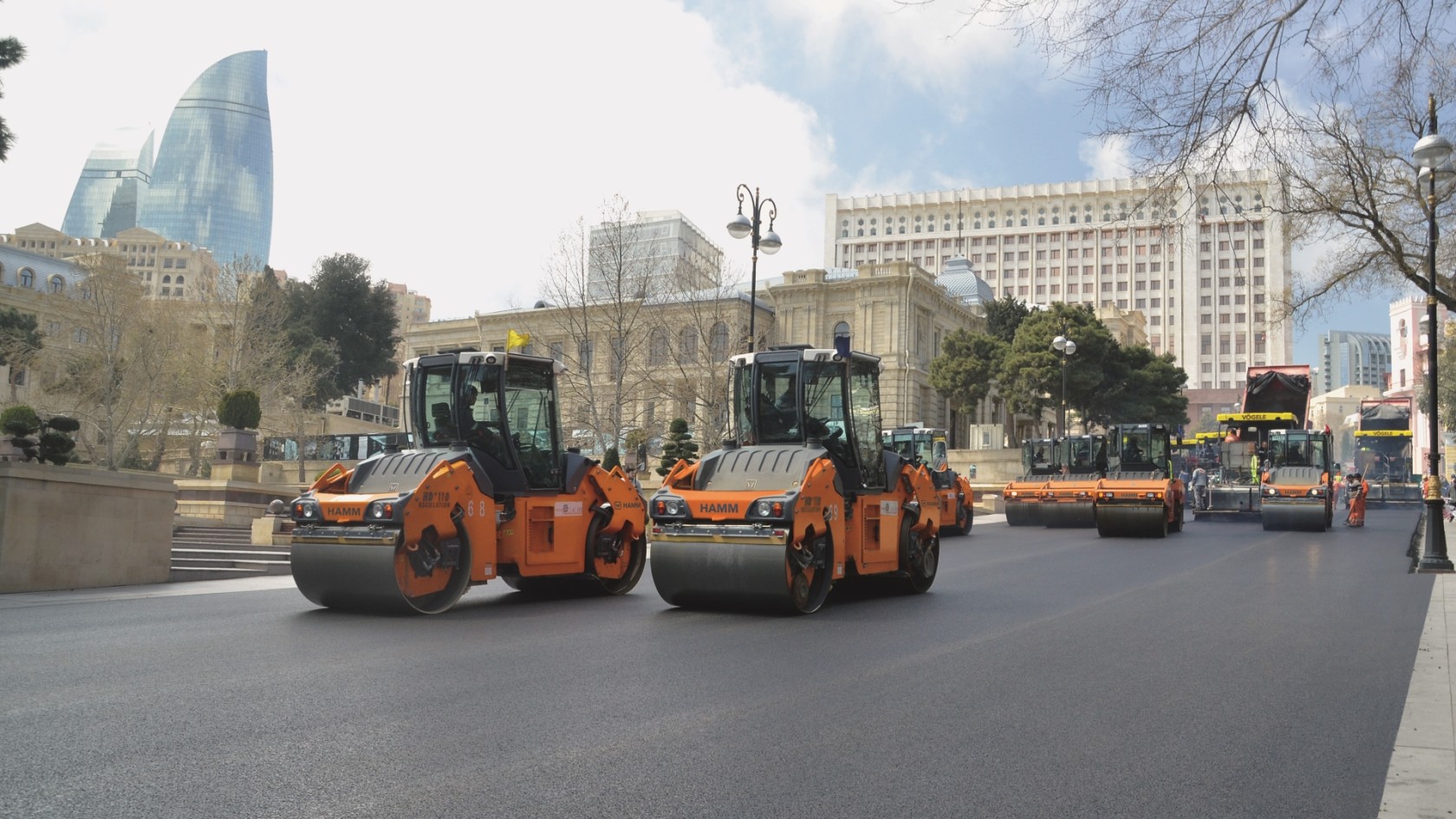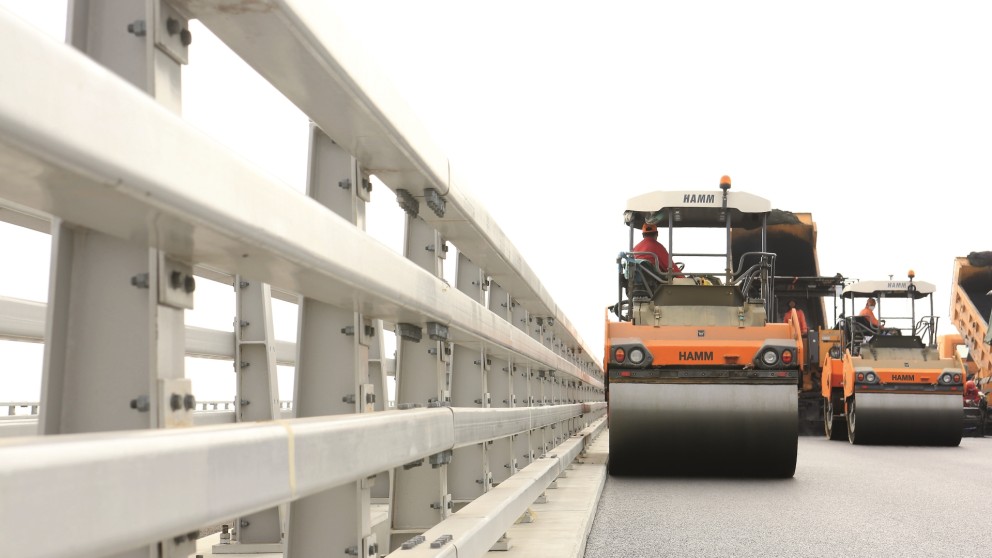Asphalt Compaction


Asphalt pavement is compacted to produce an even road surface with as much grip as possible and to permanently bond the individual asphalt layers together to achieve a high degree of stability, wear resistance, and lasting evenness. Rollers by Hamm reduce the percentage of air voids in the asphalt, making it more wear-resistant and more durable.
What type of mix will be compacted, and what are the thicknesses of the individual layers? Where’s the road located – on a highway, in a residential area, on a bridge? The answers to these questions determine the type of roller to use. How wide and at what speed will the road be paved? This determines how many machines will be needed for compaction.
Hamm’s oscillation technology makes dynamic compaction on elevated roads or bridges possible. Even thin layers can be compacted with only low vibration levels emitted into the surrounding area.
Rollers are heavy road construction machines used for compacting hot – and therefore still flexible – asphalt pavement. To prevent damage to the new asphalt surface, they must never come to a stop during the compaction process – which is why proper maintenance is so important. Before starting a job, it’s important to check whether the drum is clean, whether there is sufficient fuel and engine oil in the tank, and whether there’s enough water in the tank for the drum sprinkling system.
As a general rule, the higher the temperature of the mix being paved, the better the compaction will be. The ideal temperature range depends on the mix composition, the pavement thickness, and the type of binding agent used.
“Dynamic compaction with HAMM’s oscillating rollers is ideal for preventing damage to the underlying cold layer.”
HAMM OscillationThe roller operator starts compaction at the tie-in points and follows the edge of the road from there. The pavement is pressed home in a further pass. Dynamic compaction is mainly used for the main compaction process. The drums vibrate horizontally (oscillate) or vertically (vibrate), thus significantly increasing the effect of compaction. The operation is completed by a final roller pass that will “iron out” any remaining irregularities in the asphalt pavement or surface to produce a perfect surface finish.
